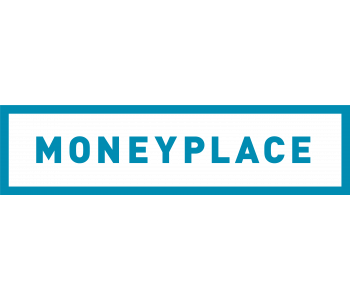With the End of Financial Year (EOFY) 2020 quickly heading towards us, it's time to ensure you're across all the ways to get your business ahead and ready for growth. Many have argued that it may be great for us to just skip 2020 altogether and get on with 2021, but before we jump ahead too quickly, let's make sure you've maximised all the benefits available to you and your business to prosper into the future.
Here's a quick summary of what we've covered in this "unofficial guide":
- Cracking EOFY commercial vehicle deals
- Grab the Government stimulus benefits with both hands
- Financial solutions to support and grow your business
- Tax time - simple tips to maximise your return
- Access a range of other helpful financial info
Cracking EOFY commercial vehicle deals
In the weeks leading up to June 30, car dealerships will be dropping their prices. They will be making deals with customers to ensure that they move all of their stock before their EOFY deadline. So be sure to make the most of the discounts that come with the EOFY, and remember to strap on your bargaining boots - there's always a deal ready to be made. Take advantage of the EOFY sales and talk to our new car buying partners carconnect (a part of the Stratton Finance family). They'll do the haggling with dealerships for you, get you the best price on your car and deliver it direct to your door or worksite. It's all done online!
Here's a selection of cracking EOFY commercial vehicle deals we have access to (amongst many others!), and you may be able to utilise the enhanced instant asset write-off incentive with:
^ Whilst carconnect expects to be able to source these prices or better for our customers, actual prices will depend on use, payment option, location and availability.
^^ This weekly repayment estimate is provided by Stratton Finance Pty Ltd (Australian Credit Licence: 364340. ("Stratton"). Stratton is a finance broker. This repayment is calculated with an interest rate of 4.95% p.a. over a term of 60 months with a 0% residual / balloon payment. Other residual / balloon amounts are available. The vehicle price shown may not include other additional costs such as stamp duty, government fees and other charges payable in relation to the vehicle. In order to provide this estimate, Stratton are required to make several eligibility assumptions, including property ownership. To comply with regulations, consideration may be given for credit score and loan to value ratio (LVR), this estimate has been calculated with an LVR of >90%. This estimate is based on several assumptions outlined above and should be used for information purposes only and is not an offer of finance on particular terms. Credit fees, service fees and charges may apply. Credit to approved applicants only. A quote, details of all fees and charges may be obtained by contacting Stratton via strattonfinance.com.au or calling 1300 STRATTON (1300 787 288).
Grab the government stimulus benefits with both hands
If you're not already well versed in the Government stimulus package the Government has offered Australian businesses, here's a quick recap of some key elements:
- Instant asset write-off - an accelerated instant asset write off which has been increased up to $150,000 from $30,000
- Cash flow / employment assistance for small business - providing payments to companies with turnover up to $50M, as well as wage subsidies for apprentices or trainees
- JobKeeper - a business support package providing $1,500 per fortnight per employee for impacted, eligible businesses
Once you've spoken to your accountant and established what benefits your business can utilise, contact us so we can help you finance the assets you're looking to buy at a competitive rate, quick smart.
Financial solutions to support and grow your business
Inline with recent announcements by the Government to support small to medium size (SME) businesses, a number of our lending partners have released new financial solutions to better support and enable growth for SMEs. These include features such as:
- An initial repayment holiday up to 6 months
- Products include a line of credit, meaning you have no interest charges unless you drawdown
- Unsecured loans not requiring an asset as security
- Loans up to $250,000 per borrower over three years
- Simple and easy application process
As always, the financial products being made available by these lenders should be considered in the context of your own business and with the consultation of your accountant. Once you've assessed this, contact us so we can help you access these solutions.
Tax time - simple tips to maximise your return
Yes, it's time to gather those receipts and logbooks and get your taxes in order. Whether it's making the most of EOFY sales, or finding out what can actually be claimed back, it pays to be prepared. Here are some of the potential ways, as a car and business owner, that you can make the most of tax time this year.
Tip 1. Claim Car Expenses by Employees
For any motoring expense to be eligible to be claimed as a work expense by an employee, the vehicle must be used, at least partially, for business or work-related activity.
So how do you claim a deduction for the business use of your vehicle?
You have a choice of two different methods (as per ATO guidelines) to calculate and claim work-related car expenses.
Cents per kilometre method
Simply multiply the number of work-related kilometres you do per year, by an allowance of 68 cents per kilometre (up to a maximum distance of 5,000km).
Just use the formula kilometres/year x $0.68.
So, if you drive 3,000 km/year for work, you are eligible to claim back:
3,000 x $0.68 = $2,040!
Logbook method
Simply keep a detailed travel logbook of all your car use including car odometer readings, travel times, kilometres travelled and the reason for each journey (both business and non-business use) for a minimum continuous period of 12 weeks. From this logbook, you can calculate the average percentage your car is used for work purposes over the course of a year. From this percentage, you can then claim your total car expenses as a deduction to reduce your taxable income.
At the end of the income year, Tim's logbook shows he travelled a total of 11,000 kilometres, of which 6,600 were for business.
To work out the percentage the car was used for business purposes, Tim made the following calculation: 6,600/11,000 x 100 = 60%
Tim's total expenses, including depreciation, are $9,000 for the income year. To work out how much he could claim, Tim completed the following calculation: $9,000 x 60% = $5,400
For easy car expense management relating to tax time, take a look at the ATO's app my Deductions.
Tip 2. Use the Instant Asset Write-off
As you may know, before the challenging times of 2020, an instant asset write-off scheme for businesses existed (with turnover of up to $50 million and for assets up to $30,000), allowing businesses to claim a tax break on what they spend on these business-related assets.
This has now been increased to businesses with an aggregated annual turnover of $500 million and the $30,000 asset write-off has grown to $150,000, available until 30 June 2020. Find more information about the instant asset write off scheme in our article here.
Whether it is a car, a computer or tools, if it is used by your business, and it is valued at under $150,000, it may be able to be written-off. As we said, the instant asset write-off is due to end June 30 this year, so this will be your last chance to claim!
NOTE: If your business is GST-registered, the value of the assets you are claiming are GST-exclusive. If your business is not GST-registered, then your asset will be valued GST-inclusive.
Tip 3. Think about Depreciation
Individuals, or businesses that may not qualify for the Instant Asset Write-Off (or are claiming back on items that do not meet the write-off criteria), may be able to claim back via the Depreciation Method as per ATO guidelines. The Depreciation Method takes into account the rates at which the value of your item decreases over time, and so, the tax you can claim back on that item will vary from year to year.
There are two different Depreciation Methods that can be used:
Diminishing Value Method
The Diminishing Value Method assumes that the value of a depreciating asset decreases more in the early years of its effective life and uses the formula:
Base Value x (Days Held/365) x (200%/asset's effective life span)
So, if you had a $80,000 item you had owned for 1 year that had a lifespan of 5 years, the sum would be:
80,000 x (365/365) x (200%/5) = $32,000 for the first year, with the base value decreasing each year so too would the amount you can claim back for the five-year span.
Prime Cost Method
The Prime Cost Method assumes that the value of a depreciating asset decreases uniformly over its effective life and uses the formula:
Asset's Cost x (days held/365) x (100%/asset's effective life)
So, by using the same figures as above, the formula would be:
80,000 x (365/365) x (100%/5) = $16,000 every year for a total of five years.
Remember, your accountant is one of your best friends for EOFY planning, speak to them today!
Access a range of other helpful financial info
We regularly publish a wide a range of general financial information in our newsroom, here's a hand-picked selection of information you might find interesting:
- Low doc car loans - what are they and the benefits
- Support and assistance during COVID-19
- Equipment finance - why it makes sense
We're here to help, anytime
So there it is, the "unofficial guide" to EOFY 2020 for businesses. Make the most of the EOFY vehicle sales, maximise the government stimulus, access new funding solutions or just get a great deal on your finance by calling us now on 1300 787 288 or get a 30 second online quote.
But remember you have to be quick, June 30 will be here before you know it!


























Previous
Your unofficial personal EOFY 2020 guide to getting ahead
Next
Keeping good money habits post-pandemic